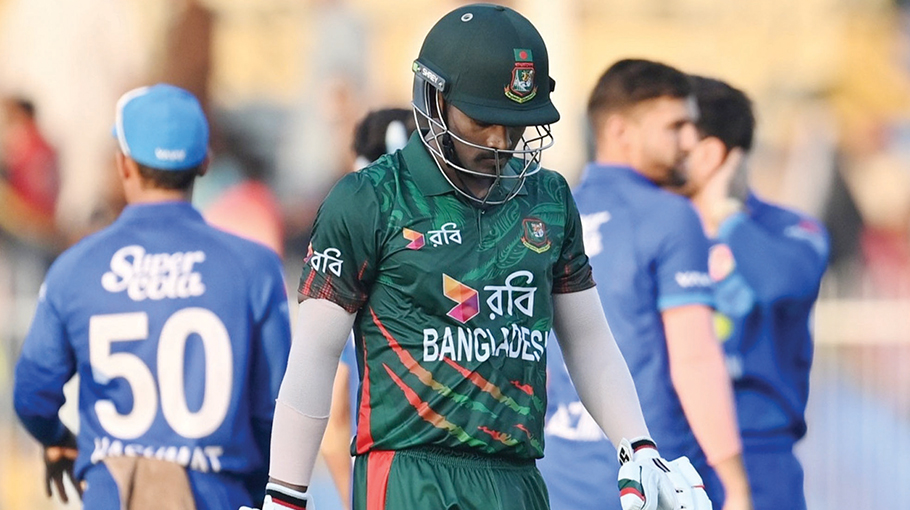Bangladesh’s white-ball batting: A stalled evolution


Bangladesh had been contemplating a shift in their white-ball batting strategy ahead of the 2023 ODI World Cup. Yet, this discussion now seems so outdated that it raises doubts about any real progress.
In March 2022, against South Africa, Shakib Al Hasan began his aggressive play just after the 30-over mark, effectively countering the Proteas' plan to save Kagiso Rabada's overs for the death. Typically, Bangladesh builds their innings until the 40th over and then accelerates, depending on the number of wickets in hand. Shakib's early aggression was a departure from the norm, helping the Tigers clinch the ODI series 2-1.
The spotlight was back on Bangladesh's batting approach during the recent series against Afghanistan. Despite missing key players in various matches of the three-match ODI series, it was an opportunity to rethink their strategy. Soumya Sarkar and Tanzid Hasan Tamim were the latest to open the batting, marking the 14th different opening pair in two years. Soumya showed potential, but like the frequent changes in the opening pair, possibly due to Liton Das's injury, there has been no consistency in their approach.
In the third ODI, the openers started strongly, but once they were dismissed, the innings lost momentum. Zakir Hasan and Towhid Hridoy did not perform to their capabilities.
Despite the heroics of Mahmudullah Riyad and Mehedi Hasan Miraz, Bangladesh fell short of runs. The team management had expected the pitch to favour bowlers under lights, but when that didn't happen, the result was inevitable as there weren't enough runs to pressure Afghanistan.
The three ODIs in Sharjah felt like a throwback to a different era, not reflective of modern ODI norms. There were no 300-plus scores from teams batting first, which usually benefits the Tigers, especially in Mirpur, where 240 is often a challenging total.
Before the 2023 ODI World Cup in India, where venues like Mumbai and Hyderabad saw scores exceeding 360, there was talk of a more aggressive approach under Chandika Hathurusingha. Mushfiqur Rahim was moved down to number six, Hridoy was promoted, and Shakib seemed to set a new tone during the South Africa series, with an emphasis on accelerating in the middle overs.
However, when it mattered, without key players like Mushfiqur or Shakib, and skipper Najmul Hossain Shanto in the third ODI, Bangladesh reverted to aiming for 250 runs. No players have stepped up in the absence of regular batters.
The continuity of their aggressive intent from 2023 has not been maintained. Despite discussions about improving practice and match pitches to boost batters' confidence, little has changed under the new board president.
For a real shift in approach, Bangladesh needs to adapt to the style of modern white-ball cricket, but they still seem far from achieving that.




